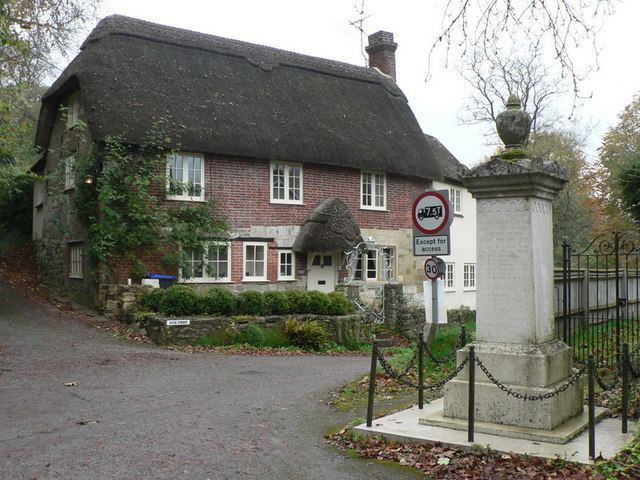Population 222 (in 2011) Civil parish Ebbesbourne Wake Local time Friday 4:54 PM | OS grid reference ST992242 Unitary authority Dialling code 01722 | |
 | ||
Weather 12°C, Wind S at 14 km/h, 88% Humidity | ||
Ebbesbourne Wake is a village and civil parish in Wiltshire, England, approximately 10 miles (16 km) south-west of Salisbury. The parish lies near the head of the valley of the small River Ebble, and includes the hamlets of Fifield Bavant and West End.
Contents
Map of Ebbesbourne Wake, Salisbury, UK
History
It is not known when Ebbesbourne was first inhabited or what it was called but fragmentary records from Saxon times (circa 826 AD) indicate that the whole Chalke Valley area was thriving, and the village was called Eblesburna. It is surmised that the land adjacent to the bourne (river) was once owned by a man called Ebbel. Note that the word bourne is derived from the Old English "brunna".
The Domesday Book of 1086 divided the Chalke Valley into eight manors: Chelke (Chalke - Bowerchalke and Broadchalke), Eblesborne (Ebbesbourne Wake), Fifehide (Fifield), Cumbe (Coombe Bissett), Humitone (Homington), Odestoche (Odstock), Stradford (Stratford Tony and Bishopstone) and Trow (circa Alvediston and Tollard Royal).
Peter Meers, in his book Ebbesbourne Wake through the Ages, translates the village's Domesday entry as:
Robert holds Eblesborne from Robert. Aluard and Fitheus held it before 1066 as two manors. (TRE = tempore Regis Edwardii, the time of Edward the Confessor, 1042-1066) Taxed for 14 hides.
Land for ten ploughs. In lordship ten hides, there six ploughs. Four slaves (serfs). Eighteen villeins (villagers). Seven [Serfdom#Bordars|bordars (smallholders)]] with four ploughs. Fourteen acres of meadow, pasture fourteen furlongs long, 4 furlongs wide. Woodlands two leagues length and width. Value £12, now £14.
Geoffrey de Wak became Lord of the manor in 1204; although his relationship to Hereward the Wake is unknown, the shield of Hereward's coat of arms can today be seen on the church tower. By 1249 the settlement was known as Ebbelburn Wak. By 1785 it was known as Ebesborne Wake.
In the 12th century the area was known primarily as the Stowford Hundred, then subsequently as the Chalke Hundred. This included the parishes of Berwick St John, Ebbesbourne Wake, Fifield Bavant, Semley, Tollard Royal and 'Chalke'.
Although the name Ebbesbourne Wake has developed over time, the spelling has never been completely settled. The Ordnance Survey of 1889 and 1927 used Ebbesborne Wake, whilst the 1963 and 1974 maps used the 'orne' spelling for the parish, but named the village Ebbesbourne Wake. Historian Peter Meers notes in his book Ebbesbourne Wake through the Ages that Fowler's A Dictionary of Modern English Usage of both 1926 and 1965 describes the spelling of 'bourne/borne' as inconsistent.
Manor Farmhouse is from the 17th century, with rebuilding and additions in the 18th and 19th. A National School was opened in or before 1846; a schoolroom was built in 1854 and a teacher's house in 1870. The school closed in 1985 owing to low numbers of pupils.
When the civil parish of Fifield Bavant was extinguished in 1894, its land was transferred to Ebbesbourne Wake parish.
Parish church
There has been a church at Ebbesbourne Wake since the 13th century. The present church is largely 14th century, with 13th-century window details and a 12-century font.
The tower has five bells, of which four are from the 17th century. The church was designated as Grade II* listed in 1960.
From 1859 the vicar of Ebbesbourne was also rector of Fifield Bavant, but it was not until 1923 that the two ecclesiastical parishes were united. In 1970 the benefice was united with Alvediston and today the church is part of the Chalke Valley group of churches.
Chapel
An independent meeting house was established in 1782 at a cottage called Buntings. Circa 1791 the congregation moved to a former coach house, belonging to the Earl of Pembroke, not far from the church; in 1857 a new stone chapel was built on the same site.
Local government
The civil parish has an elected parish council. The parish is in the area of Wiltshire Council unitary authority, which is responsible for all significant local government functions.
Amenities
There is a village hall and a pub, the Horseshoe Inn.
